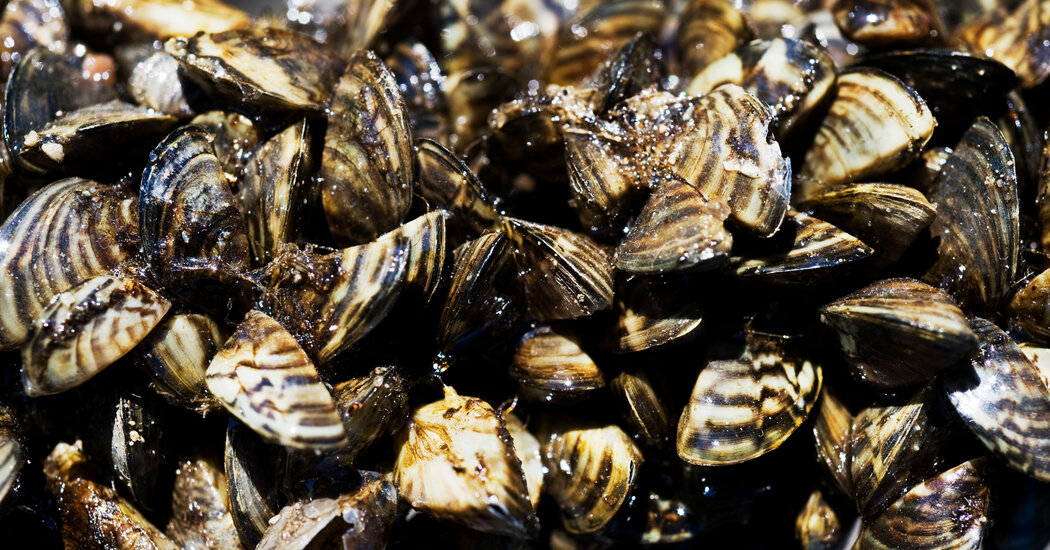Thousands of invasive species introduced to new ecosystems around the world are causing more than $423 billion in estimated losses to the global economy every year by harming nature, damaging food systems and threatening human health, a wide-ranging scientific report published on Monday has found.
The costs have at least quadrupled every decade since 1970, according to the report, which was based on 2019 data. Researchers warned that the cost figures were conservative estimates because of the challenges in accounting for all effects.
Over the last few centuries, humans have intentionally and unintentionally introduced more than 37,000 species to places outside their natural ranges as the world has become more interconnected, the assessment said. More than 3,500 of those are considered invasive because they are harmful to their new ecosystems.
Invasive nonnative species were a major factor in 60 percent of recorded extinctions of plants and animals, according to the report, which was produced by the Intergovernmental Science-Policy Platform on Biodiversity and Ecosystem Services for the United Nations. It expands on a sweeping 2019 report by the same panel, which found that as many as one million plant and animal species are at risk of extinction.
“We are seeing unprecedented increases in the numbers of alien species worldwide,” Helen Roy, an ecologist and one of the leaders of the new study, said in an interview. “It’s about 200 new alien species every year. And, yes, with those kinds of numbers, we will also see the impacts increasing.”
The report is the most exhaustive look yet at how invasive nonnative species are driving biodiversity loss. It was compiled by 86 experts from 49 countries, who drew on thousands of scientific studies and contributions from Indigenous people and local communities.
Some species are relocated by global forces like wildlife trade and international shipping. Zebra mussels, for instance, are an invasive species that has driven local mussels to the brink of extinction in the Great Lakes and forced power plants to spend millions unclogging water intakes. They probably arrived in North America on cargo ships from Europe in the 1980s. Other plants and animals have been known to hitch a ride with ordinary travelers moving by car, plane or train.
Species have also been introduced intentionally for their perceived benefits and then spread out of control. Solutions, the researchers said, have to address such factors.
Not all nonnative species are considered a problem. Some, like chickens and potatoes, have been domesticated and play important roles in agriculture. But unchecked nonnative species that become invasive can severely damage food systems.
The European shore crab has invaded commercial shellfish beds in New England, for example, while the Caribbean false mussel has damaged key fisheries in India.
Invasions can also damage human health. Mosquitoes that transmit diseases like malaria, dengue fever and the Zika virus have become invasive around the world.
“Usually the poor communities are the ones that suffer the most,” said Aníbal Pauchard, another leader of the assessment. “At the same time, with climate change, you’re going to have mosquitoes going higher, you know? So getting, for example, to New York.”
Disturbed ecosystems may be unable to deliver some of the services depended on by humans, like maintaining fisheries, regulating rain patterns and purifying drinking water. Invasive species also make ecosystems more vulnerable by reducing the biodiversity that makes them resilient to diseases and other threats.
Islands are particularly vulnerable. The number of invasive nonnative species exceeds the number of native ones in more than a quarter of the world’s islands.
That became vividly clear last month when wildfires in Hawaii, fueled by invasive nonnative grasses and higher temperatures, killed at least 115 people. In recent years, invasive grasses have fueled other deadly fires in Chile and Australia.
“It is a perfect storm,” said Dawn Bazely, a professor of biology at the York University in Toronto who specializes in grasses. “It is the intersection of global warming with invasive species that is creating these terrible, terrible feedbacks.”
Countries have failed to meet a target set in 2010 to reduce invasions. But, in December last year, nearly every country in the world agreed as part of a sweeping agreement to protect biodiversity to reduce the introduction and establishment of invasive species by at least half.
Researchers said that the most important way to fight the growing crisis of invasive nonnative species was to prevent their arrival in new regions. The options include assessing risks before moving species or adopting biosecurity measures that are often quite simple.
The cost of inaction is high. Once a species is established, especially in marine environments, getting rid of them is typically very expensive or even impossible.
“The problem is growing, and it is a serious threat to the quality of life of millions of people around the world,” said Peter Stoett, another of the report’s leaders. But it’s also, he added, “a manageable problem if the investment and the commitment are there.”











